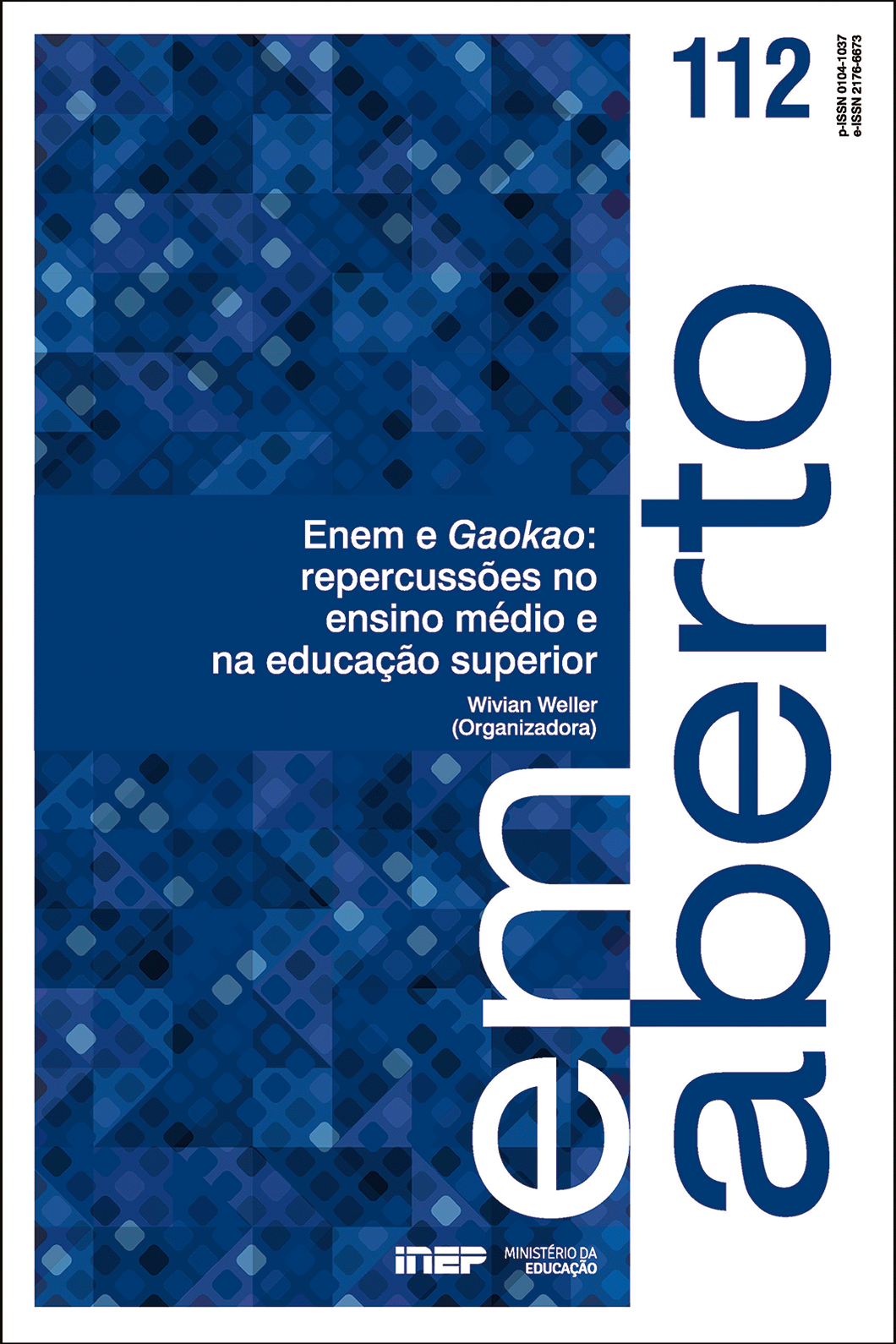Gaokao: vector of social mobility or gatekeeper of elitism?
Abstract
This study follows up on the analysis of data collected in 2007, aimed at verifying whether Gaokao facilitated upward social mobility at China. Its first part analyses national and regional datasets on the changing nature of the exam, access to different types of universities, and the keeping of elite institutions access opportunities reserved only to privileged social groups. The second part investigates the long-term impact of the Gaokao, through the course of 14 years, on three interviewees herein identified as Gaokao-champion, Gaokao-loser, and Gaokao- mediocre. By comparing their Gaokao outcomes to their career trajectories and subsequent social statuses, two aspects are illustrated: 1) Gaokao promotes the ideology of meritocracy and promise upward social mobility through expanded higher education opportunities; 2) underneath Gaokao’s meritocratic veneer lies deepening social inequality at all levels, from income to hukou status and to social networks. These inequalities sustain elite opportunities and gatekeeping. Gaokao not only serves to legitimize privileges, but also to justify broken promises of upward social mobility and to normalize a sense of “undeservedness” and worthlessness of those from rural and working-class backgrounds.
Downloads
References
ANG, Y. Y. How China escaped the poverty trap. New York: Cornell University Press, 2016.
CEBOLLA-BOADO, H.; HU, Y.; SOYSAL, Y. N. Why study abroad?: sorting of Chinese students across British universities. British Journal of Sociology of Education, [s. l.], v. 39, n. 3, p. 365-380, 2018.
CHINA. Ministry of Education (MOE). The 211 Project. Beijing: Ministry of Education of the People’s Republic of China, 2001. Disponível em: http://www.moe.gov.cn/publicfiles/business/htmlfiles/moe/moe_1985/200804/9084.html. Acesso em: 5 set. 2021.
CHINA. National Bureau of Statistics of China (NBSC). China Statistical Yearbook 2019. [Beijing], 2019. Disponível em: http://www.stats.gov.cn/tjsj/ndsj/2019/indexeh.htm. Acesso em: 14 dez. 2021.
CHINA. National Bureau of Statistics of China (NBSC). Households’ income and consumption expenditure in 2019. Beijing, Jan. 2020. Disponível em: http://www.stats.gov.cn/english/PressRelease/202001/t20200119_1723719.html. Acesso em: 8 dez. 2021.
DONNELLY, M.; EVANS, C. Framing the geographies of higher education participation: schools, place and national identity. British Educational Research Journal, [s. l.], v. 42, n. 1, p. 74-92, Feb. 2016.
FONG, V. L. China’s one-child policy and the empowerment of urban daughters. American Anthropologist, [s. l.], v. 104, n. 4, p. 1098-1109, Dec. 2002.
FONG, V. L. Only hope: coming of age under China’s one-child policy. Stanford, Calif.: Stanford University Press, 2004. 242 p.
HENZE, J.; ZHU, J. Current research on Chinese students studying abroad. Research in Comparative and International Education, [s. l.], v. 7, n. 1, p. 90-104, 2012.
KIM, S. W.; BROWN, K.; FONG, V. L. Credentialism and career aspirations: how urban Chinese youth chose high school and college majors. Comparative Education Review, [s. l.], v. 60, n. 2, p. 271-292, May 2016.
KIM, S. W.; BROWN, K.; FONG, V. L. How flexible gender identities give young women advantages in China’s new economy. Gender and Education, [s. l.], v. 30, n. 8, p. 982-1000, 2018.
KIM, S. W.; FONG, V. L. A longitudinal study of son and daughter preference among Chinese only-children from adolescence to adulthood. The China Journal, [s. l.], n. 71, p. 1-24, Jan. 2014.
LIU, Y. Geographical stratification and the role of the state in access to higher education in contemporary China. International Journal of Educational Development, [s. l.], v. 44, p. 108-117, Sept. 2015.
LIU, Y. Higher education, meritocracy and inequality in China. [s. l.]: Springer, 81 2016.
LIU, Y. Geographical stratification and the provision of education in contemporary China. In: CARRILLO GARCIA, B.; HOOD, J.; KADTZ, P. I. (Eds.). Handbook of welfare in China. Cheltenham: Edwad Elgar Publishing, 2017. (Handbooks of Research in Contemporary China).
LIU, Y. When choices become chances: extending Boudon’s positional theory to understand University choices in contemporary China. Comparative Education Review, [s. l.], v. 62, n. 1, p. 125-146, Feb. 2018.
LOYALKA, P. et al. Inequalities in the pathway to College in China: when do students from poor areas fall behind? The China Quarterly, [s. l.], v. 229, p. 172- 194, 2017.
LU, X. Contemporary Chinese social structure. Beijing: Chinese Academy of Social Sciences, 2010.
LYU, M.; LI, W.; XIE, Y. The influences of family background and structural factors on children’s academic performances: a cross-country comparative study. Chinese Journal of Sociology, [s. l.], v. 5, n. 2, p. 173-192, Apr. 2019.
MARGINSON, S. High participation systems of higher education. The Journal of Higher Education, [s. l.], v. 87, n. 2, p. 243-271, 2016.
OUR WORLD IN DATA. Enrollment ratios between 1980 and 2010 for tertiary education. [s. d.]. Disponível em: <https://ourworldindata.org/tertiary-education>. Acesso em: 6 set. 2021.
QUAN, R.; HE, X.; SLOAN, D. Examining Chinese postgraduate students’ academic adjustment in the UK higher education sector: aprocess-based stage model. Teaching in Higher Education, [s. l.], v. 21, n. 3, p. 326-343, Feb. 2016.
REAY, D.; CROZIER, G.; CLAYTON, J. ‘Strangers in paradise’? Sociology, [s. l.], v. 43, n. 6, p. 1103-1121, Dec. 2009.
RUAN, D. et al. Silent revolution: social origins and university matriculation at Peking University and Suzhou University, 1952-2002. Social Sciences in China, Beijing, v. 1, n. 1, p. 98-118, Jan. 2012.
SHEN, W. Transnational research training: Chinese visiting doctoral students overseas and their host supervisors. Higher Education Quarterly, [s. l.], v. 72, n. 3, p. 224-236, 2018.
TAM, T.; JIANG, J. Divergent urban-rural trends in college attendance. Sociology of Education, [s. l.], v. 88, n. 2, p. 160-180, 2015.
TSUI, M.; RICH, L. The only child and educational opportunity for girls in urban China. Gender & Society, [s. l.], v. 16, n. 1, p. 74-92, Feb. 2002.
WANG, Y.; FONG, V. L. Little emperors and the 4:2:1 generation: China’s singletons. Journal of The American Academy of Child & Adolescent Psychiatry, [s. l.], v. 48, n. 12, p. 1137-1139, 2009.
WU, X. Higher education, elite formation and social stratification in contemporary China: preliminary findings from the Beijing college students panel survey. Chinese Journal of Sociology, [s. l.], v. 3, n. 1, p. 3-31, 2017.
XIONG, P.; LONG, H.; DOU, W. The data secret files on the 985 Universities in 2016. The Paper, Shanghai, [s. l.], v. 1, n. 1, p. 1-2, June 2016.
Copyright (c) 2021 Em Aberto

This work is licensed under a Creative Commons Attribution-NonCommercial 4.0 International License.
These are the terms of this Copyright Notice:
- I declare that I permanently forfeit in favor of the National Institute of Educational Studies and Research (INEP) all rights related to:
-
- editing, publication, reproduction, and distribution of the work;
- publication through digital and electronic media;
- translation of the work to any language;
- updating, re-printing, adaptation, and compression of the work;
- uploading of work in the publishing platform of INEP;
- divulging complete or parts of work through the World Wide Web (internet), whether in Brazil or foreign countries;
- authorization of third parties to execute any of the acts mentioned before.
- I explicitly declare that I am solely responsible for the opinions expressed in the work, and its publication does not violate the rights of third parties.
- I declare that the nature of said work is one of pro bono publico and, as such, I forfeit the right to any compensation regarding ownership rights granted.
- I authorize spelling and grammatical review of the manuscript, provided that the content and opinions therein remain unchanged.












